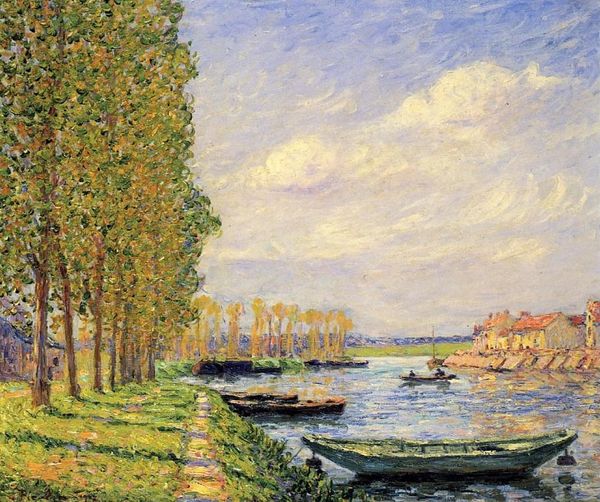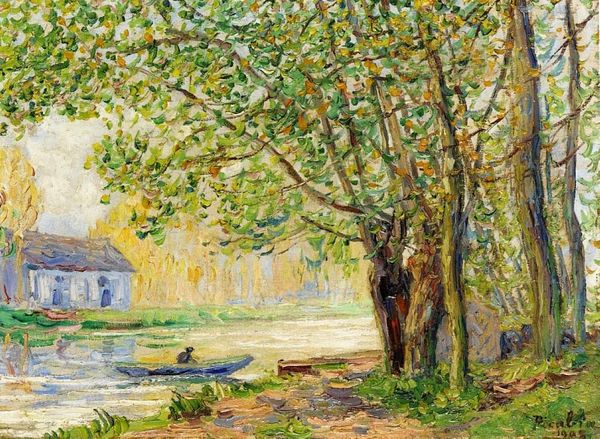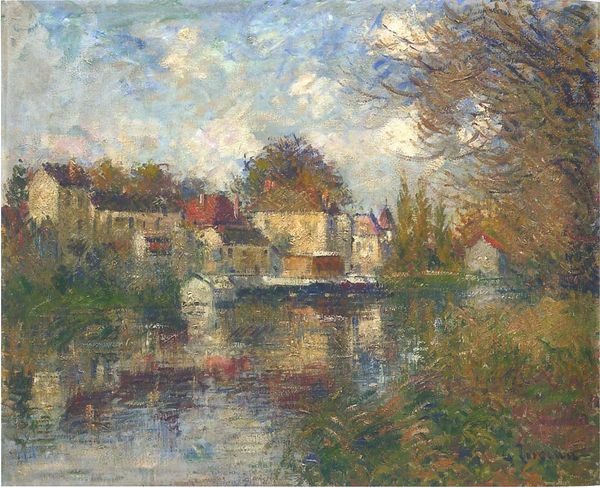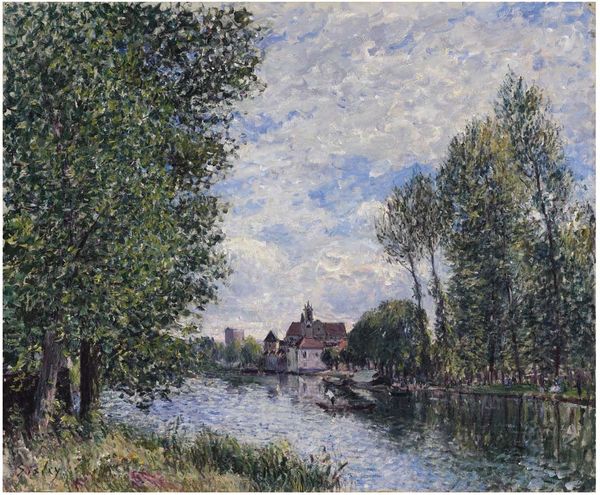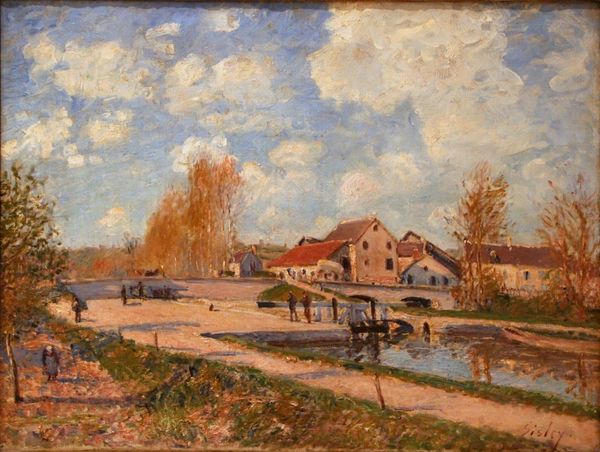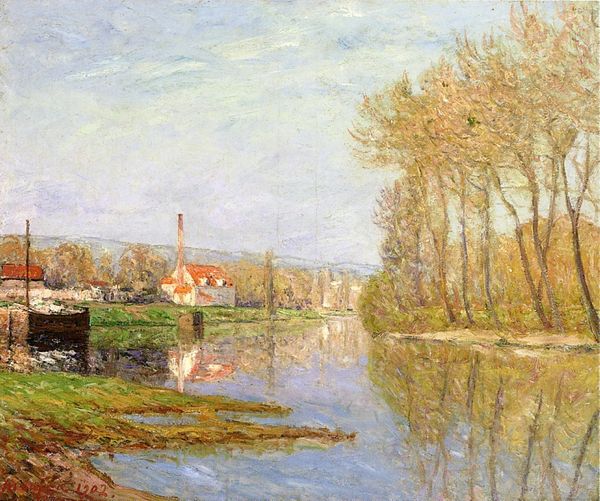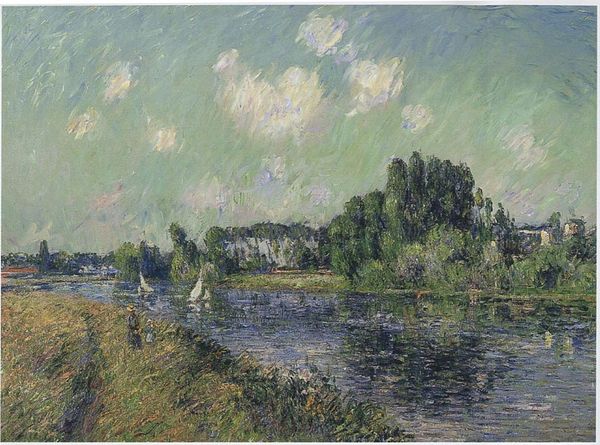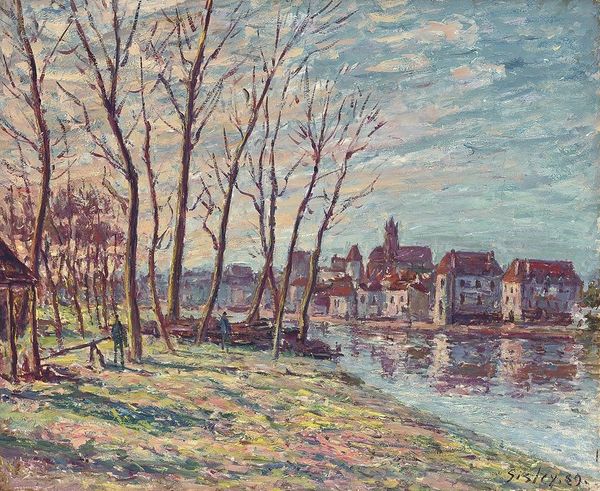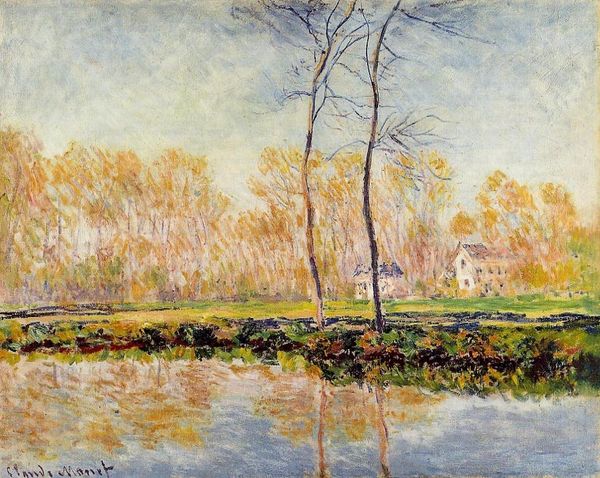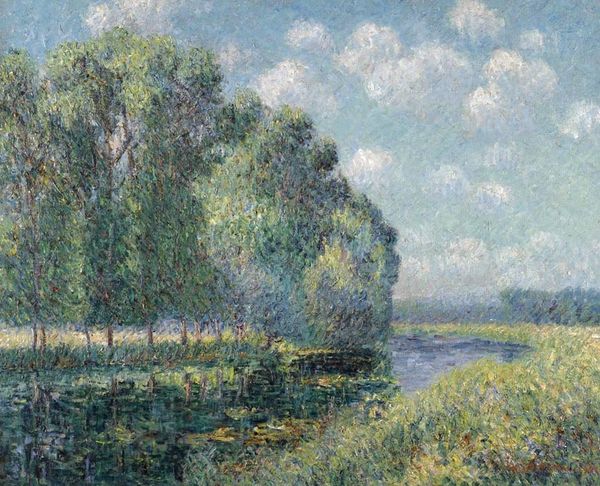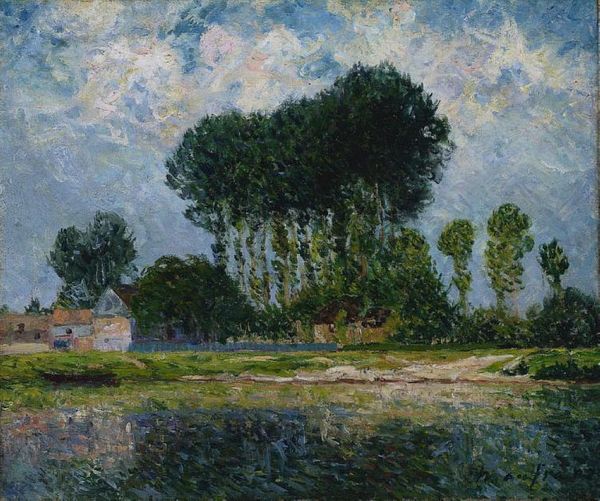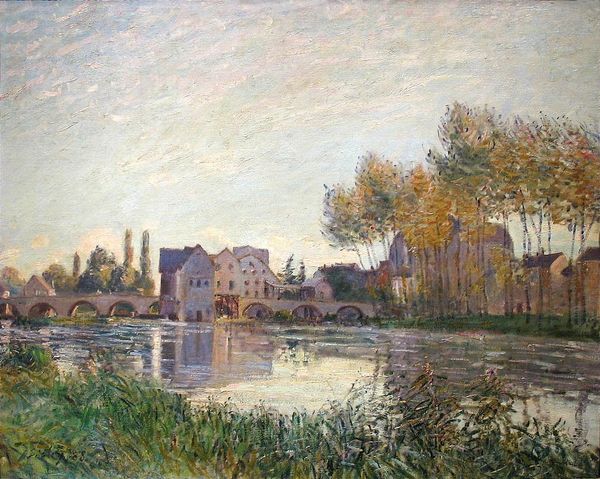
Copyright: Public Domain: Artvee
Editor: Here we have Camille Pissarro’s "Bords du Loing à Moret," painted in 1901. It's an oil painting with quite visible brushstrokes depicting a riverside scene. There’s a stillness, a quietness that really resonates. What do you see when you look at it? Curator: I see echoes of pastoral traditions, transformed by the gaze of modernity. Water, of course, has always been a potent symbol – of life, renewal, the unconscious. But notice how Pissarro renders it: not as a pristine mirror, but a dynamic surface reflecting not just the sky, but also the nascent industrial presence on the riverbank. Editor: Industrial? I hadn't picked up on that initially. Curator: Consider the buildings nestled amongst the trees. Are those homes or factories? And observe the bare trees – they are autumnal, in transition. Pissarro, like many Impressionists, captured fleeting moments, but also encoded deeper cultural shifts. The river becomes a metaphor for the passage of time, carrying away the old and ushering in the new. What do you make of that one almost completely green tree? Editor: It’s almost defiant, a stubborn insistence on life. Maybe Pissarro intended that green tree as a kind of visual hope? Curator: Perhaps. Or maybe a recognition that change is never total, that vestiges of the past always remain. It's fascinating how simple compositions like this can hold so much symbolic weight. Editor: It makes you realize there's more to see beyond just the pretty scenery! Thank you. Curator: Absolutely. It is always worth questioning whether artists create only the world in front of them, or also within them.
Comments
No comments
Be the first to comment and join the conversation on the ultimate creative platform.
